
Babel Stack*
CYBER_POT
2022/05/06-2022/05/22
BRIEF
[CyberPot] is a little life that is half electromechanical and half plant. The idea is inherited from the pure virtual potted plant [CyberFlower], [CyberPot] is a little guy who will find the sun, the sun will provide both the potted part and the mechanical part of the energy. Compared with [CyberFlower], which is more expressive but does not move, I endowed [CyberPot] with the ability to move and follow light. It is more like relatively silent but can express itself with brisk footsteps. Mecanum Wheels provide it with the ability to shift in eight directions and turn around in place, which can get a richer interaction with its owner.
CONCEPT
[CyberPot] is a piece of work that gives consciousness and soul to plants. Compared with the last work: pure virtual Cyberplant [CyberFlower], [CyberPot] may have more “Cyber-Plant” meaning, because it grows a small living shrub on the surface of a relatively cold inorganic surface. This kind of semi-mechanical and semi-life sense of conflict and fusion is the most fascinating. The mechanical carrier gives the unconscious plant a dynamic force, enabling it to pursue the light by itself, as if it has the consciousness and ability to interact with human and nature. The sunlight irradiation also provides a steady supply of energy for the photosynthesis of the plant part and the conversion of solar energy into electric energy of the mechanical part, which is a higher-level integration of silicon-based and carbon-based life.
PROTOTYPING & ENGINEERING
Here are some details of the modeling and engineering process. I redesigned a planter for small plants. The planter has a double-layer structure that holds water between the two layers and has many pores to keep the plants moist while keeping them from rotting. A very thin strip of NdFeB magnets on the underside of the planter keeps it stable when placed on the mechanical base. The four corners of the 3D printing transparent enclosure are provided with photosensitive resistors. The movement direction is determined by comparing the sensitivity of different photosensitive resistors, and the appropriate stopping position is determined by the perceived light intensity, so as to ensure that plants and machinery get sufficient light. In addition, I set up infrared sensors on the front and back of the chassis to prevent the pot from falling when moving on the table, and ultrasonic sensors on the front to prevent it from bumping into obstacles when interacting. I also designed Mecanum wheels for potted plants, because considering the small movement wear on the tabletop, Mecanum wheels can make potted plants complete more flexible movements. In addition to normal movements such as forward, backward and turning, the Mecanum wheels can also complete special movements such as eight-way translation and 360° turning in place, making the interaction of potted plants more diverse and flexible. I designed a light strip on the back to display the current lighting and charging state. When it lights up, the current light intensity is enough. Finally, I have a toggle main switch and a spare charging port on the chassis. If there is not enough light for a long time, DC power can also be used to power it.
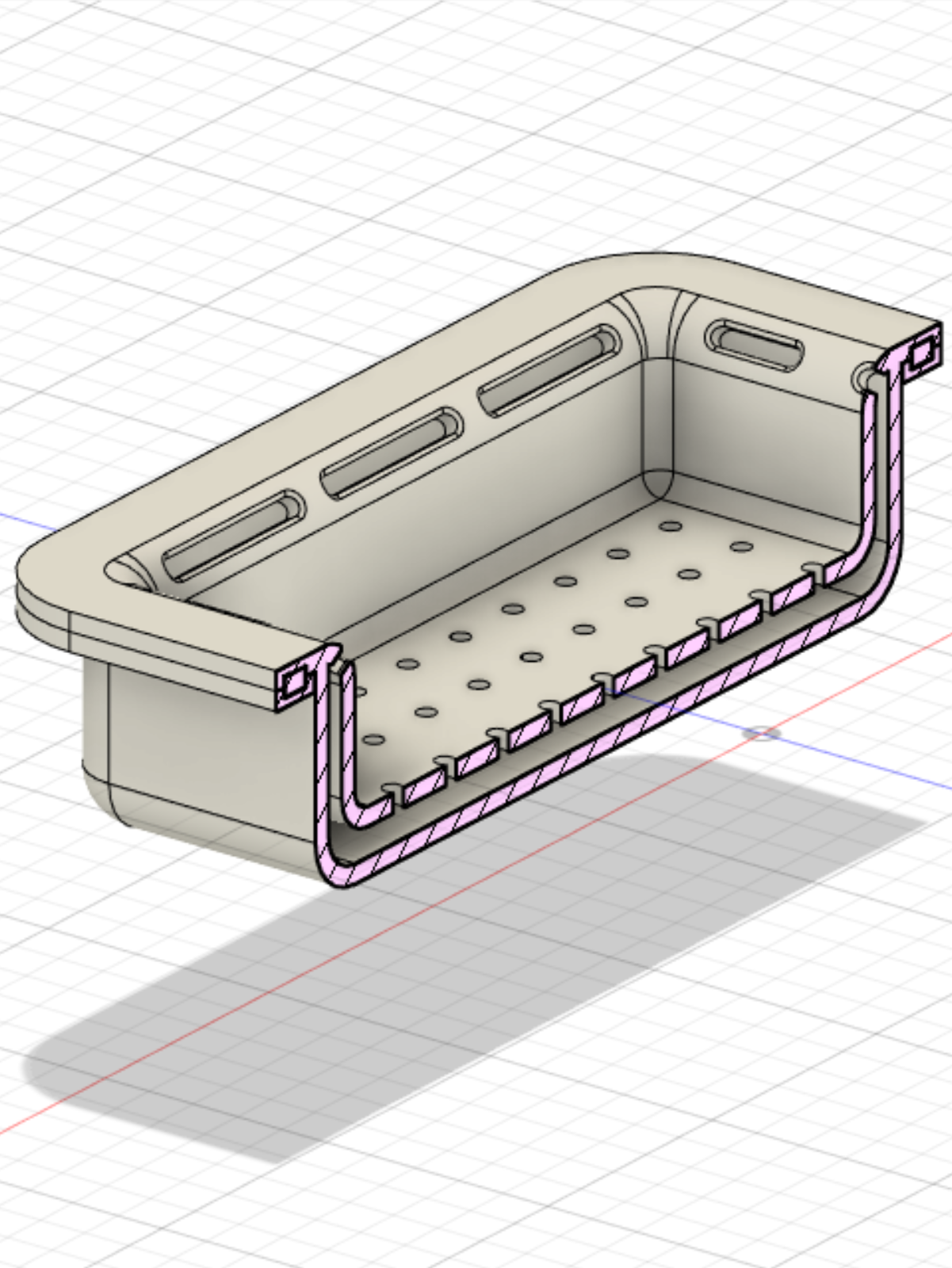
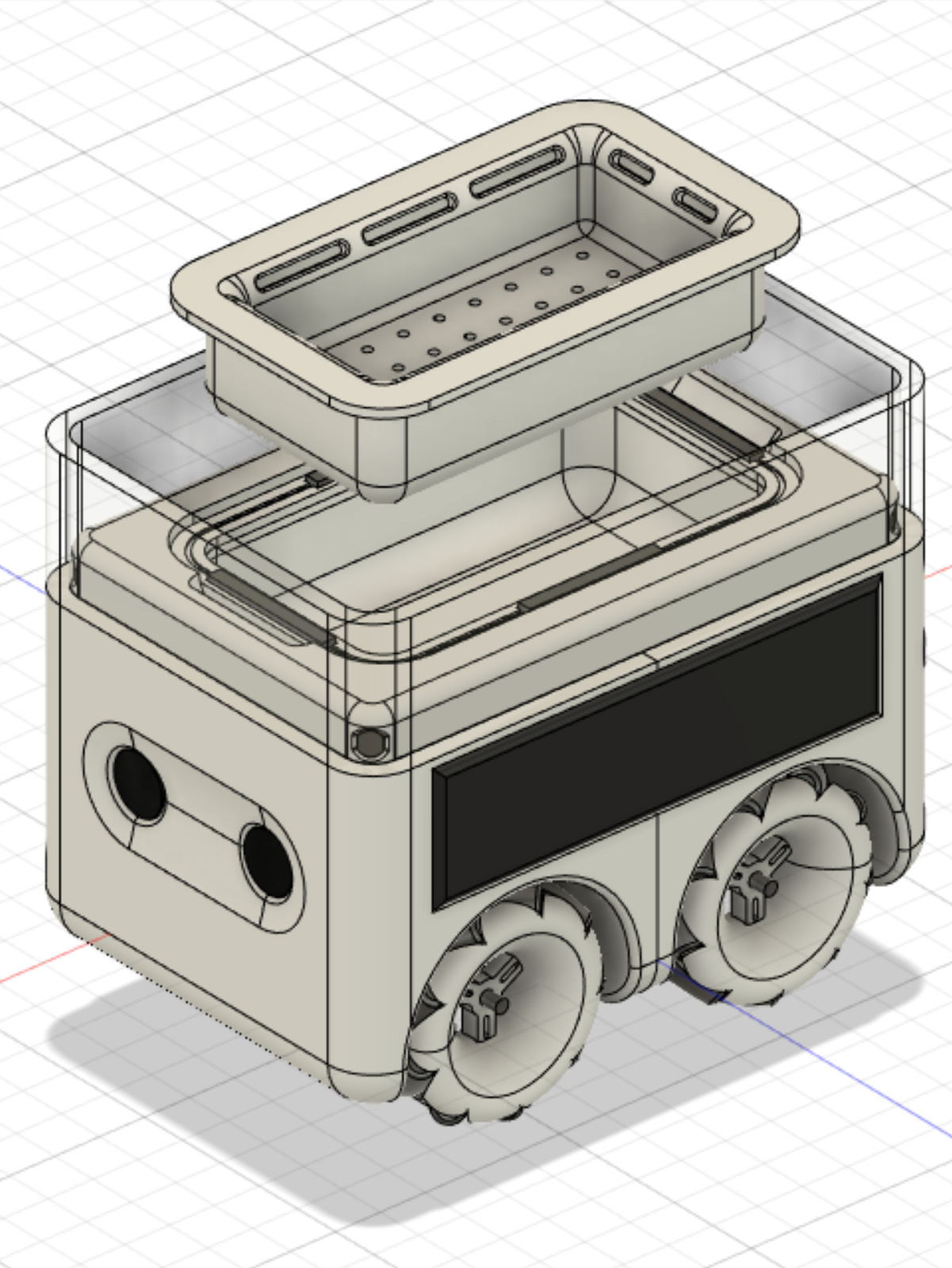

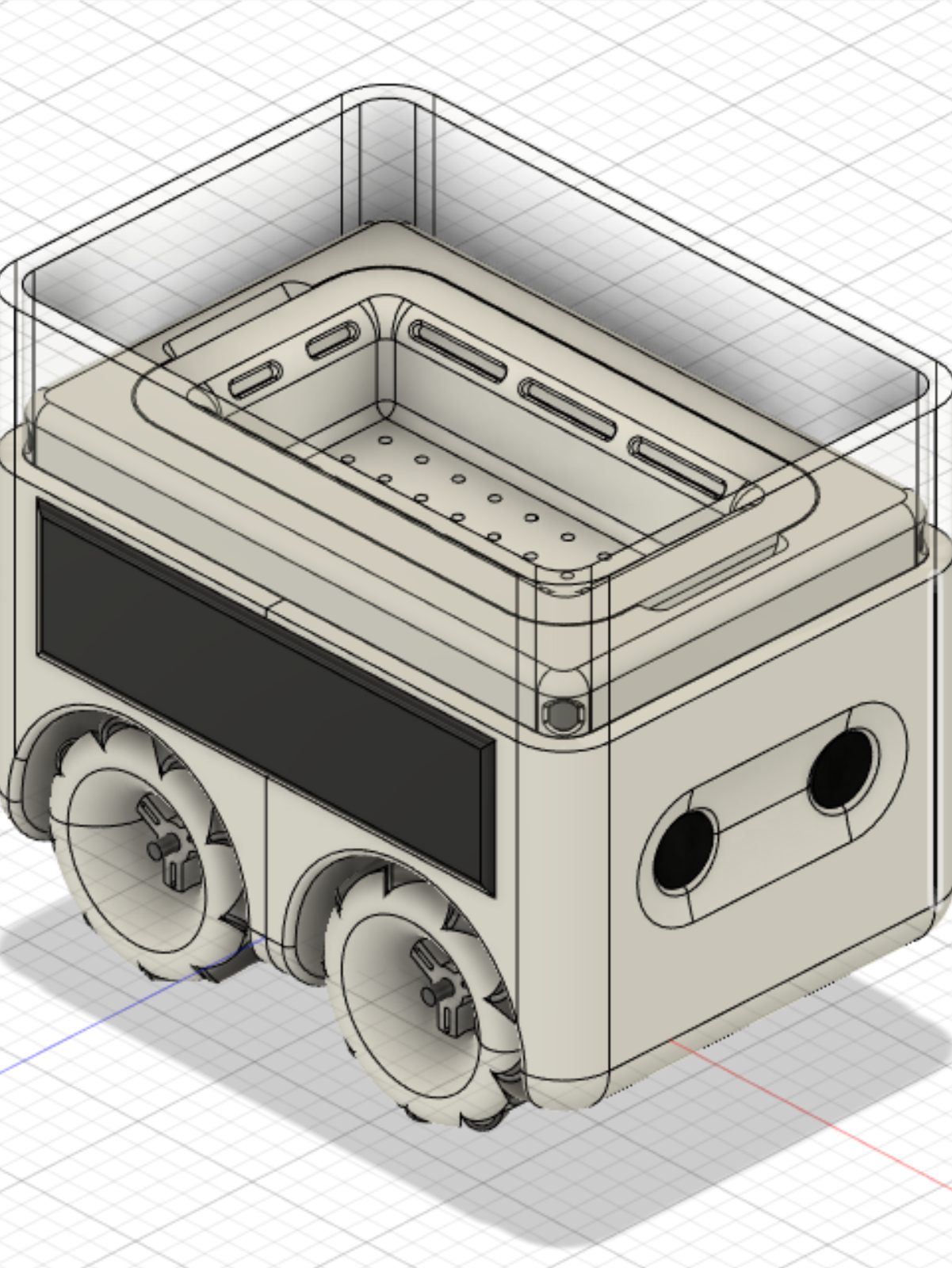

PHOTOS
The following are some real pictures of [CyberPot].

01
Perspective
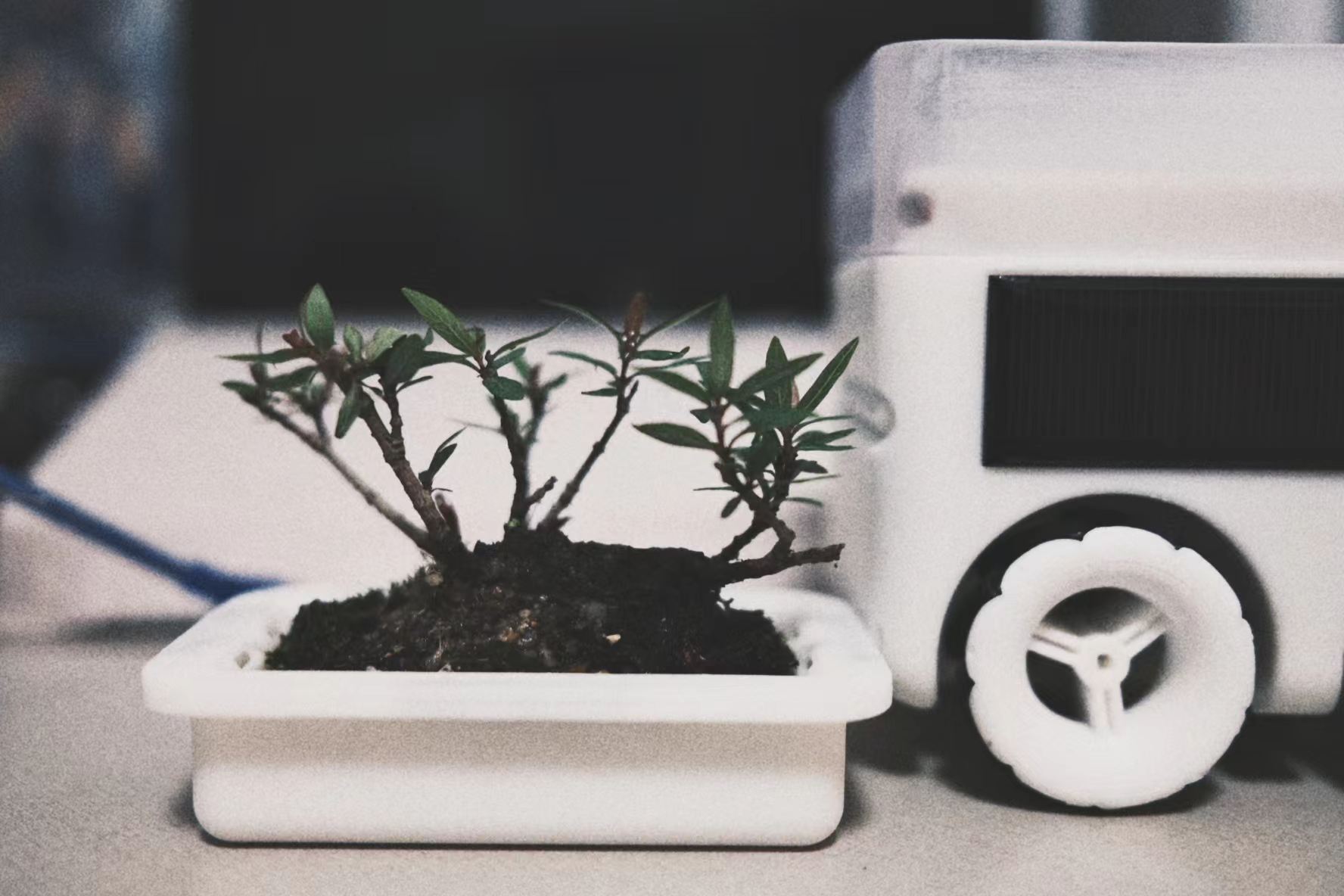
02
Detachable Independent Pot
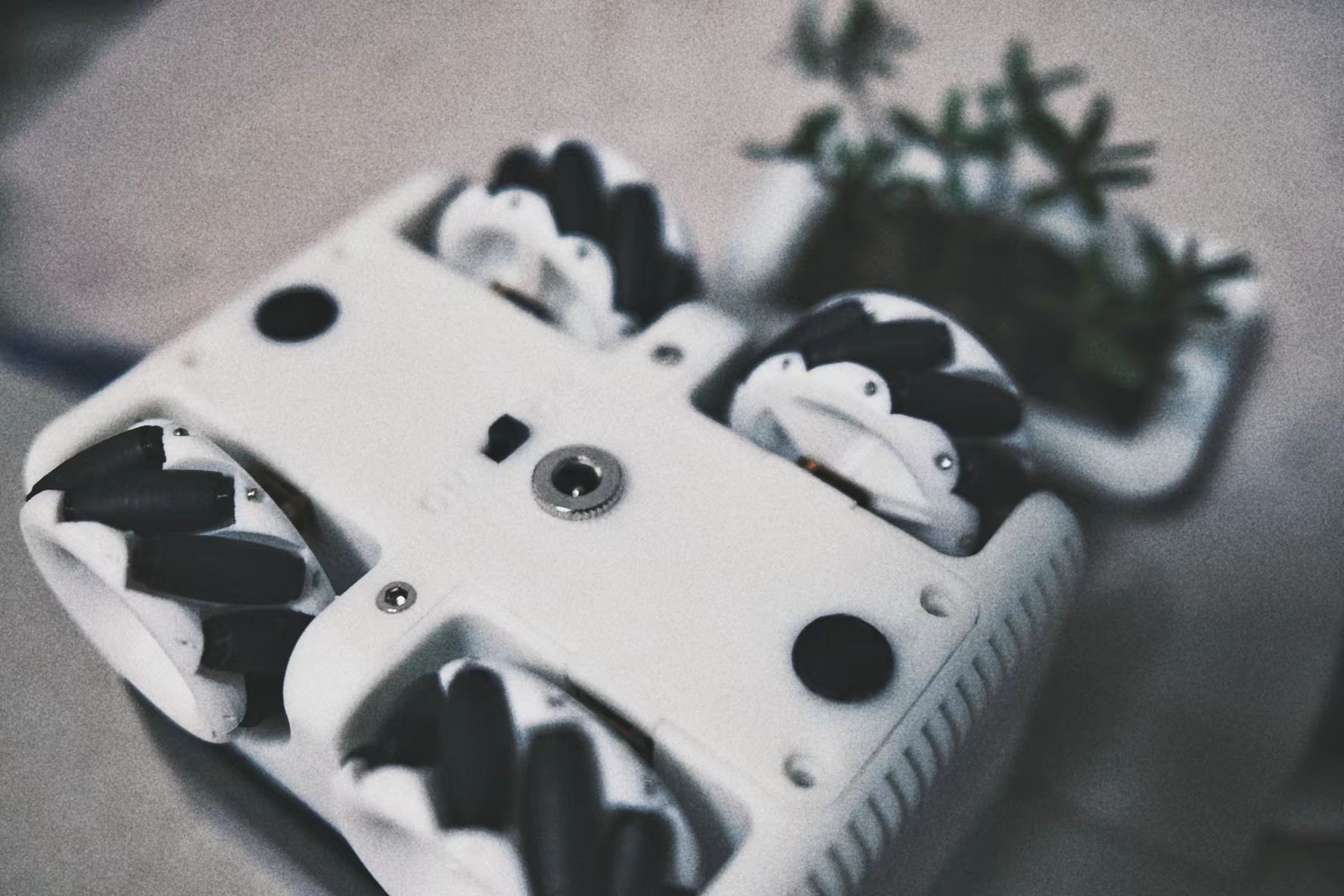
03
The Bottom
CyberPot(MR Shrub_2.0)
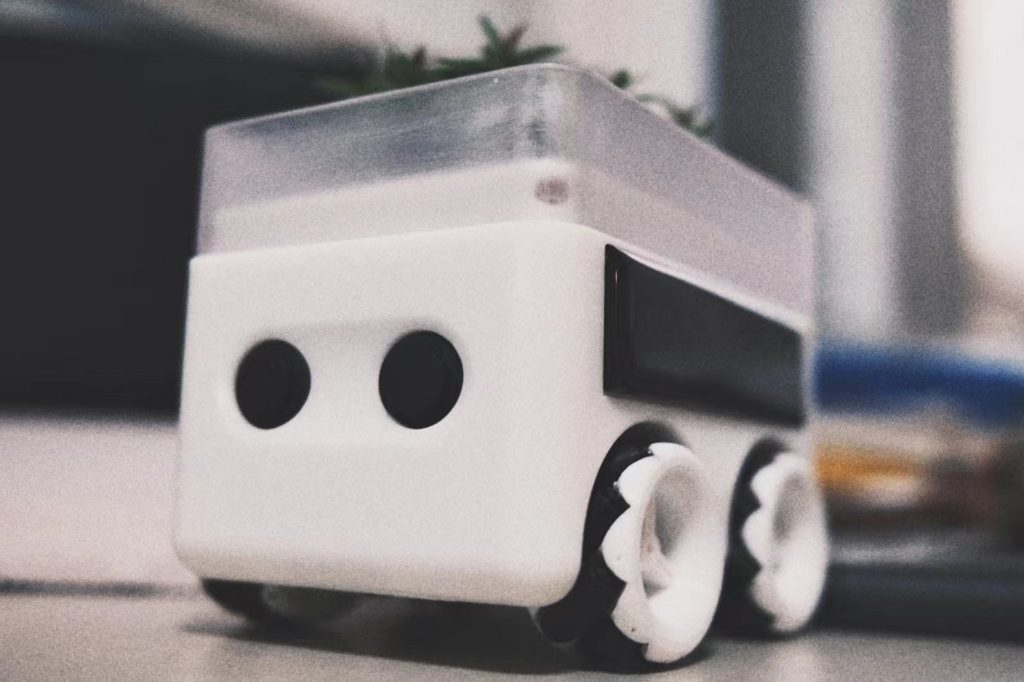
[CyberPot] is a fusion of silicon-based and carbon-based life. In the transparent enclosure four corners I set up four photosensistors, through the difference method to control the direction of pot phototaxis, and according to the intensity of the light to choose the appropriate position to stop, let the plants to bask in the sun, and let the machine to charge. Ideally, this little creature would be able to perform all sorts of life activities on its own and remain electrically charged, as well as interact with its owner.
[CyberPot] consists of the following parts: The main structure of 3d printing, transparent 3D printing fence, Arduino Nano, 5V solar panel, photoresistor, 12V battery pack and protection circuit, ultrasonic sensor, infrared sensor, GA12-N20 DC speed motor (60r/min), toggling switch, DC charging base, rectangular NdFeb magnets.
Babel Stack*
Copyright © 2023 Zheng Qi-Yang. All rights reserved.